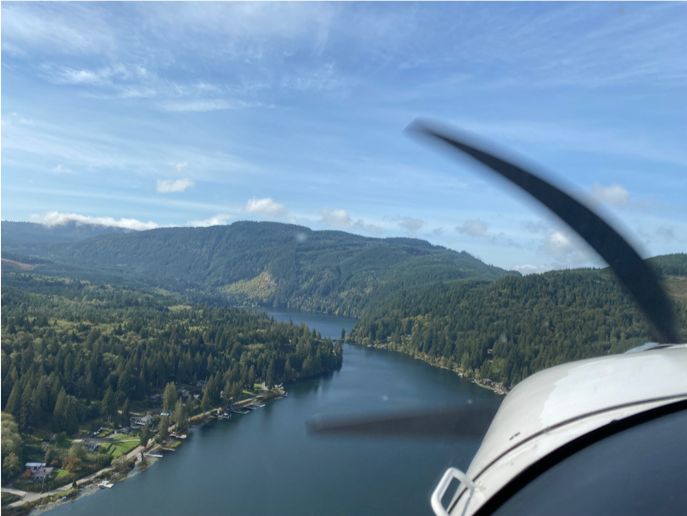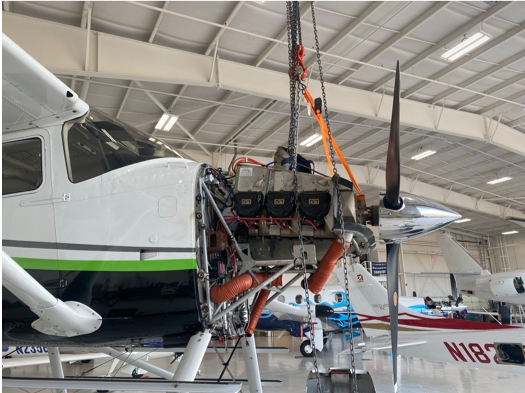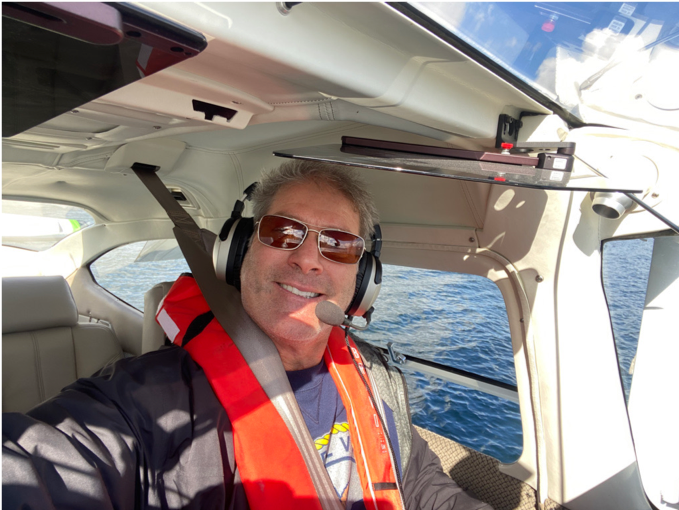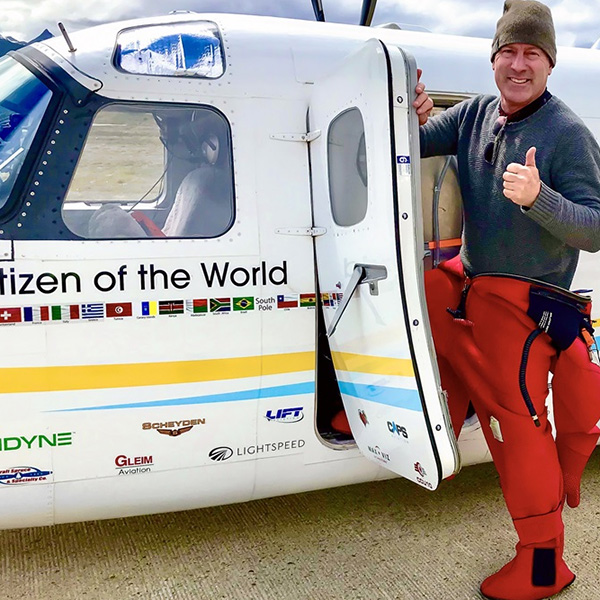
We as humans seek experiences that are routine, comfortable and safe. We intentionally do things that are predictable because we like to believe we can control our environment and for that matter ourselves. Control we eventually realize is only an illusion. Change is rarely easy. Learning new things is often punctuated with awkward moments, frustration, failure and surprises that can literally stop us in our tracks. As pilots we could argue we have a slightly higher tolerance for this sort of uncertainty and risk but at our core we are still risk averse.
This exposure to risk and uncertainty can be confirmed by a venerable group of insurance companies that take little time to say “No” to requests for seaplane transition training insurance. This stopped me in my tracks. The timing was uncanny as it was just days away from me completing a floatplane purchase after having earned my Single Engine Seaplane rating just weeks before. I couldn’t help but wonder how people were able to fly floatplanes if nobody would insure them? It seemed that in our time of uncertainty nobody was willing to take a risk on a pilot with 2,300 hours and 52 countries under his belt who had never even scratched an airplane.
Luckily with the help of my broker, Bill Pasey, and account manager Kori Moseley from Pasey-Bond, the company W. Brown & Associates that insured my turbine commander took a chance on me. This “chance” was backed by a premium that honestly shocked me. The quote was higher than what I was paying for my twin turboprop after increases two years in a row that totaled more than 60 percent. Ouch!
To make this palpable, I reasoned that few things in life are without cost either financially or emotionally. I decided after doing some “plane math” to throw caution into the wind once again to proceed despite the fact that this line of reasoning made absolutely no sense financially.
Training for insurance purposes
Park Rapids Aviation had a young instructor they recommended that was the son of the owner, Jeff Voigt. His son Ean is 23 and following in Jeff’s footsteps but didn’t quite fit the the insurance carrier’s hour requirements. With a letter, we got Ean accepted as an instructor.
Ean is a great instructor and drilled into me that I had to be 100 percent clear on the position of my landing gear 100 percent of the time before each landing. Up for water landing and down for runway landings. I embarrassed myself the second day out by making the critical mistake that no floatplane pilot should ever make. In the confusion of the moment, I left he gear down on a water landing. I quite simply blew it. Ean of course caught the mistake before it became a catastrophe. I remember walking away that day feeling totally defeated and ashamed. I knew Ean was disappointed as he had been working so hard to prevent me from making that error. After a couple-hours-long pity party I did what we pilots do: I picked myself up off the ground, swore I would never do it again, and decided to go back to fundamentals.
Back to fundamentals-building my checklist
Fundamentals for me meant doing what worked for me which was building and following a solid checklist. Let’s face it, we are human and the weakest link in an airplane. Ean didn’t use a checklist but my mind was not that of a 23 year old and I needed one. I was going to never make that mistake again even on a day when I was distracted by life. I decided there was no shame in relying on a checklist as a backup.
Ean got me proficient in about a week even though we had planned three days. I’ve honestly never been able to take flight instruction for more than two hours at a time in an airplane. This week gave me time to sit with the information and slowly think through what I needed to understand.
Building confidence
Ean signed me off at 20 hours and 25 landings per the insurance requirements and I felt pretty good. I headed back towards Washington stopping to do some landings on Newman and Hayden lakes where Addison Pemberton had introduced me to amphibious aircraft months before in his Grumman Goose.
Landing on my own for the first time was a knee knocking moment and I had a couple of hard landings. On one I landed a little uncoordinated and felt a sheering effect on the Aerocet floats as the plane corrected itself. I took off another time with the water rudders down, which created a lot of drag extending the takeoff run. Once I forgot to set the prop full-forward for takeoff. I was certainly making mistakes. I even landed on a runway and forgot to put the water rudders up. Luckily, I came in flat enough that I didn’t tear them off my Aerocets. I remember seeing that they were down after I got out of the plane and I hopped right up and retracted them before anyone could comment. Ean’s Minnesota voice rang in my ears, “You can make a lot of mistakes in a floatplane, just get the gear right.” I had done that, but I had more learning to do. Maybe the insurance guys were right about the risks of transition training after all?
I realized I still had a lot to learn on my own. No instructor. No excuses. I was now 100 percent responsible! I sat down and continued to build my checklists, cross checked them with what Cessna had for my airplane, and put reminders in for myself. I sat and thought through each of my procedures slowly so they made sense. I was getting more comfortable with floatplane flying.
Gaining confidence in the machine

The airplane needed some maintenance love since she was a low-time 1977 model with 1,750 hours on her and had not been flown much. The owner did a major renovation in 2013 and the Sea Swan, as I affectionately called her, looked great but that didn’t mean she was reliable. Putting hours on her would reveal her faults. Gary at Corporate Air Center replaced a starter, starter adapter, the exhaust manifold, a gasket on a fuel bladder, and cleaned up some of the EGT sensors. While all this was happening I was feeling a little nervous since I now hadn’t flown in close to 3 weeks.
I realized I hadn’t felt that level of stress since my first VFR solo. I kept asking myself how could I be feeling this lack of confidence after 53 countries, 2,300 hours and two circumnavigations? Well, it was real. I reminded myself I was a beginner to floatplanes and I adopted the beginner mentality which keeps pilots alive.
Doing the research
After some research in the Puget Sound area I found two lakes with Seaplane bases (indicated on sectional charts by an anchor) and studied them. I even drove by Lakesamish (spelled correctly) and Lake Whatcom on my way for dinner in Bellingham one night. I read what my Garmin Pilot app said about them and took a look at them from the air using the satellite feature. I studied the surrounding areas and talked to one person about the area.
The moment of truth
The following morning when I was prepping the floatplane the words of a great friend of mine, Dick Rutan, rang in my ears. “The greatest learning comes when you fly solo.” He was right. I spent some extra time working on the preflight, got a weather report, and took off low and slow thinking about the many things that Ean had told me. Ean and I had spent lots of time reading the winds and I decided I would circle until I was 100 percent clear on what the wind was doing. I set up into the wind by reading the lines on the water, the smiley faces on the waves, and the calm spots on the upwind side of the lake. I bled off as much speed as I could knowing my plane, outfitted with wing extensions and vortex generators, doesn’t stall until 33 knots. I corrected for wind just before I landed and had a vision of a duck landing with wings out and feet down gracefully skimming the water just before touchdown. I landed so smoothly I could barely feel it. Any duck would have been envious! I thought this landing must be pure luck and I never could do it again, but proceeded to do if five more times between the two lakes. I surprised myself and realized how landing on water is even more of an art form than landing on an asphalt runway.

Making sense of it all
As I flew back to Corporate Air Center at Skagit where the Sea Swan calls home part of the year, I was thinking about how well the plane flew, the configurations for takeoff and mentally seeing that from outside. Of course on takeoff the water rudders would be up, flaps down, prop forward, mixture and manifold pressure in.
Needless to say, I had a smile on my face a nautical mile wide. I thought to myself that flying low and slow and landing on the water felt really good. All that work had paid off and it made sense. My floatplane fantasy had come true! I was flying a beautiful airplane by myself up in the Pacific Northwest and I could barely wait until I took her upon to Canada and Alaska for the ultimate tests.
As I reflected back over the next few days, I came to realize that while we can’t control 100 percent of everything that happens in our lives we certainly can take steps to mitigate the risks, improve our skills and drive our lives forward in the direction that we feel guided. This “transition” brings many challenges and surprises but ultimately the cost is far exceeded by what we learn as pilots and humans. We navigate our way to fuller lives with the help of aviation and sharing the experience and joy with others.



